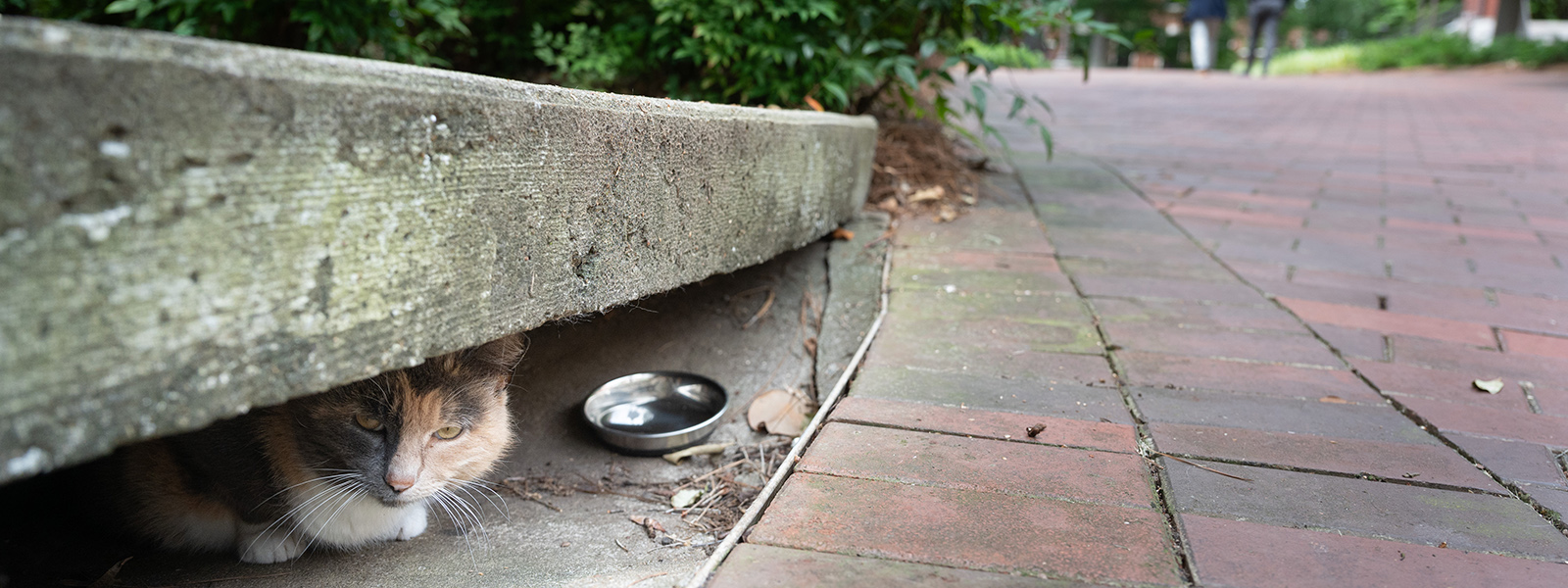
Cat-alysts of Community:
Georgia Tech Campus Cats
While Georgia Tech may list the Ramblin’ Wreck and Buzz as the university’s official mascots, many people on campus also root for a third, fluffier mood-booster: the campus cats.
“They’re such an important part of so many people’s days on campus,” said Kandi Henry, first-year chemical engineering student and treasurer of Campus Cats, the student organization that coordinates care for the cats.
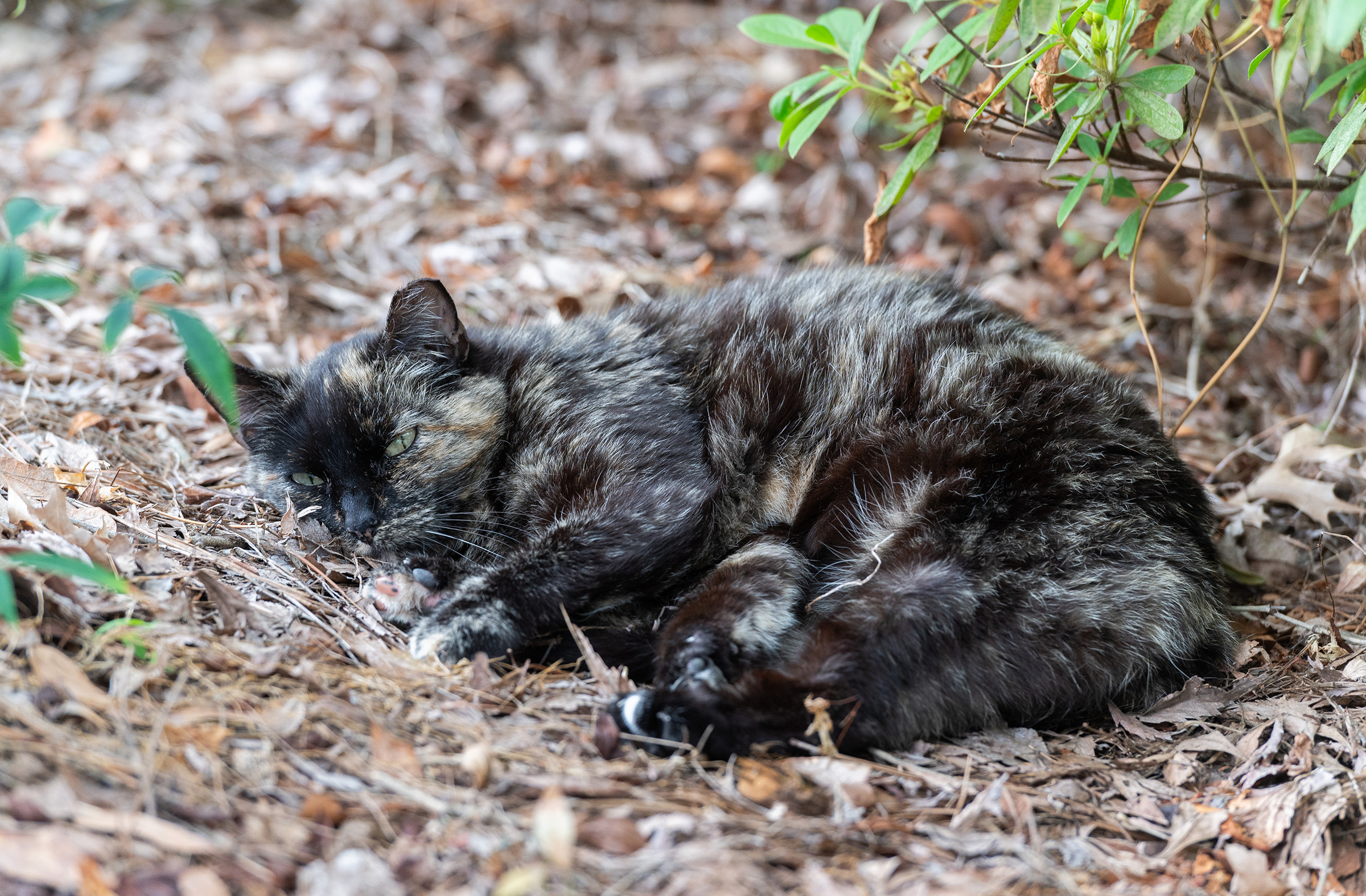
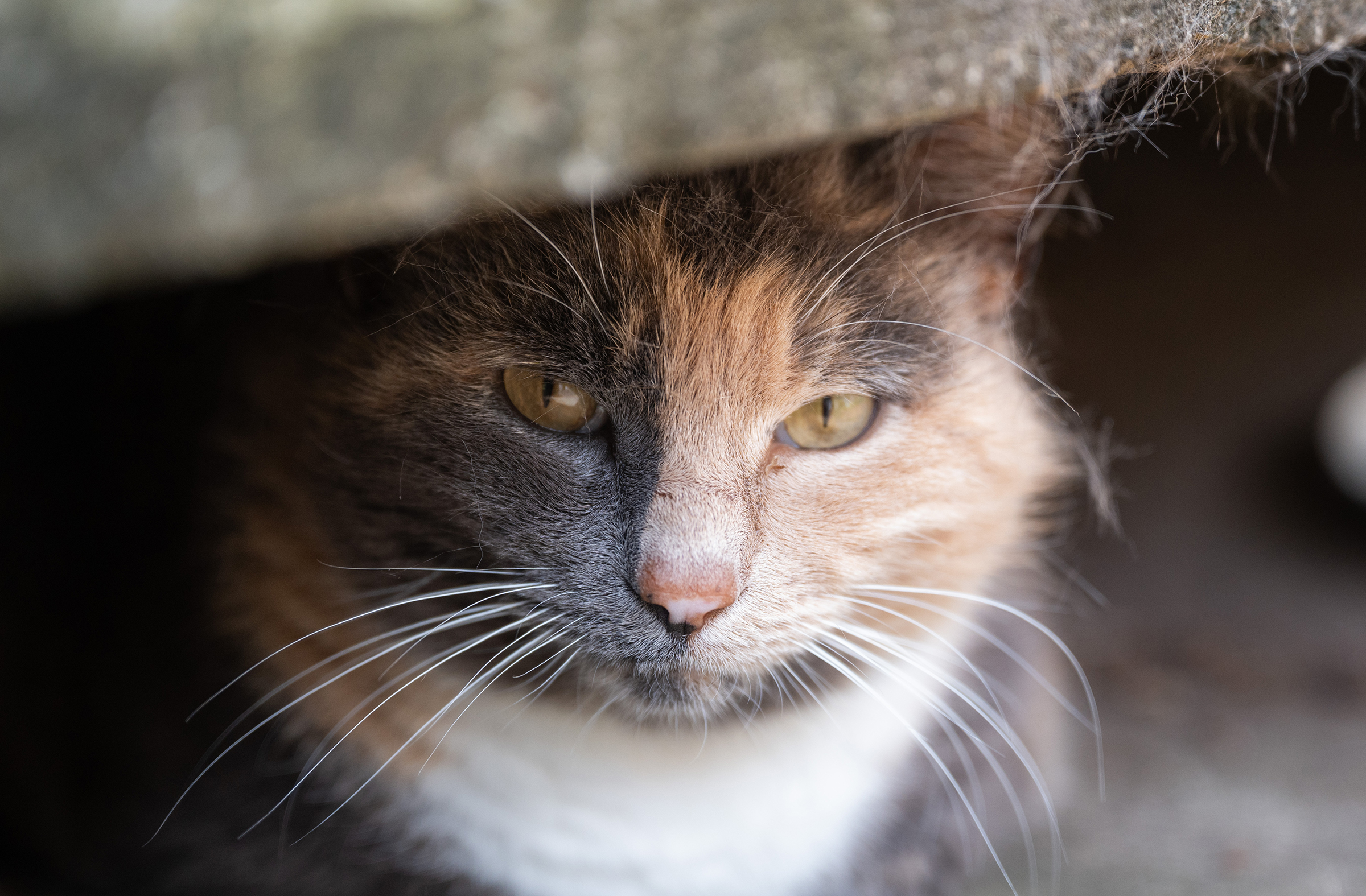
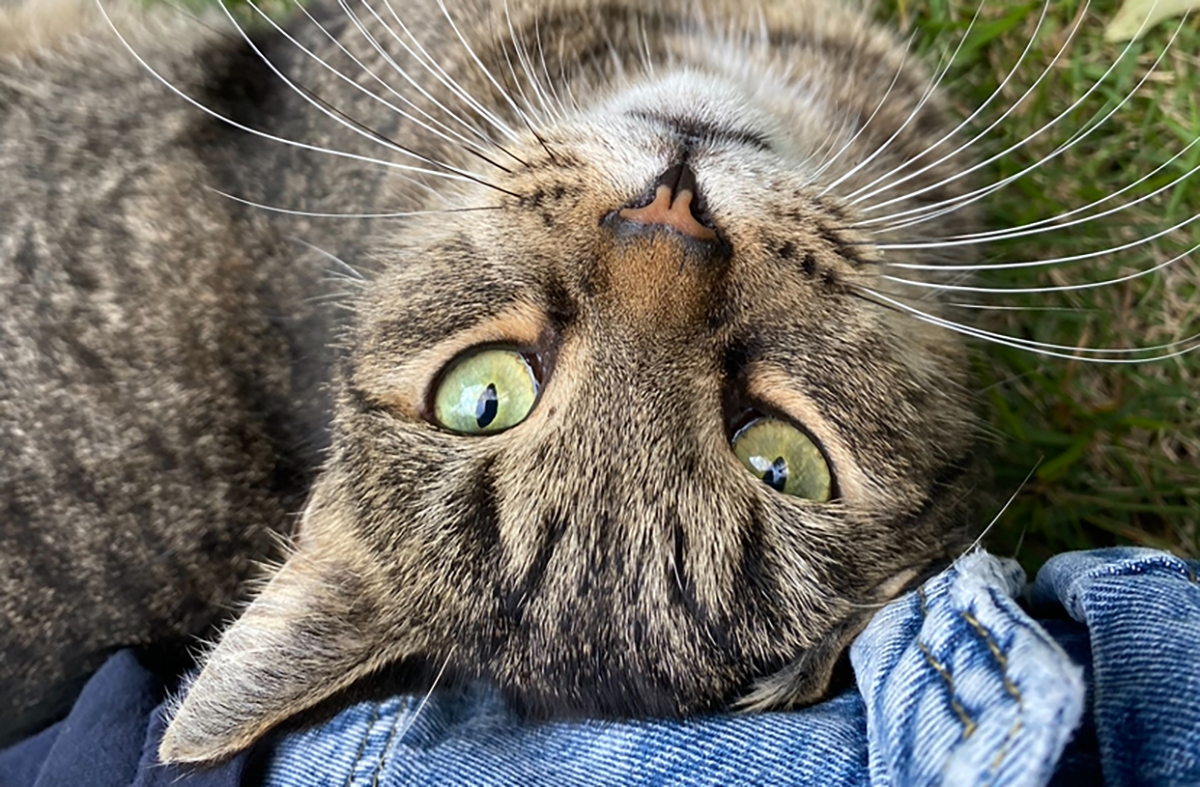
Campus Cats officially re-registered as a student organization at the start of this year, after a period of inactivity during the pandemic. In Fall 2023, students in the organization, with assistance from faculty and staff, began supplying food and water stations for the cats, keeping a log of cat sightings, building weather shelters, and securing veterinary care as needed.

Rachael Pocklington, a longtime Georgia Tech staff member, provided a food and water bowl last year for Jack, a tortoiseshell cat who can often be seen at the gates of Bobby Dodd Stadium at Hyundai Field. For Pocklington, seeing campus care for these cats has been a source of comfort.
“It warms my heart to know that so many people care about these cats,” she said. “It’s not just me or one other cat lover on campus with an office drawer full of cat food. It’s a huge community.”
The campus has gone above and beyond typical expectations for care, especially when the cats need extra help. Gracie, a tabby cat who was known to hang around the Klaus Advanced Computing Building, began to show symptoms of dental issues and stopped eating earlier this year. In response, the campus community raised over $2,000 in 24 hours to cover her medical expenses.
Since receiving care, Gracie has been adopted by Henry, who said she was moved and proud to see the extent to which the Tech community supported Gracie.
“She’ll need follow-up care, and even though she isn’t on campus anymore, I still hear from people that would be willing to continue funding that,” she said. “She’s the light of my life, and it’s been heartwarming to know that she means that much to the community, too.”
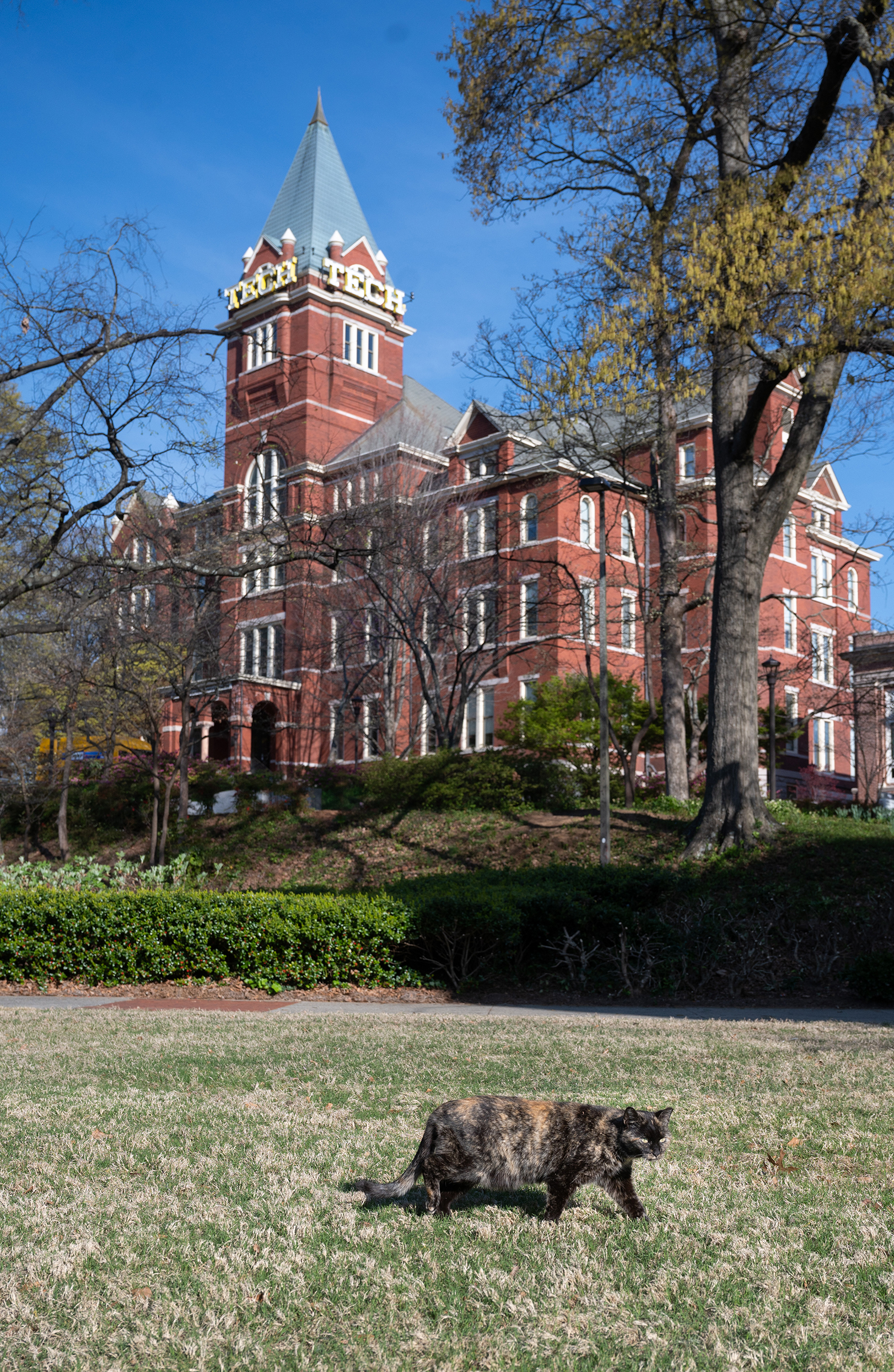
Caring for the Cats
Recently, Campus Cats has focused on identifying cats that may need to be neutered or spayed through a trap, neuter, and release (TNR) program, so that they do not reproduce and continually add to the population of on-campus cats. While the cats add to the fabric of the Tech community, it’s important to ensure their population does not spiral out of control.
Campus Cats is also working on an adoption process to find homes for cats who are well-socialized and can adapt to an indoor environment. In addition to Gracie’s adoption following her medical issues, a tortoiseshell cat named Clove (since renamed Jolene) living near 10th Street was successfully transitioned indoors and adopted earlier this month.
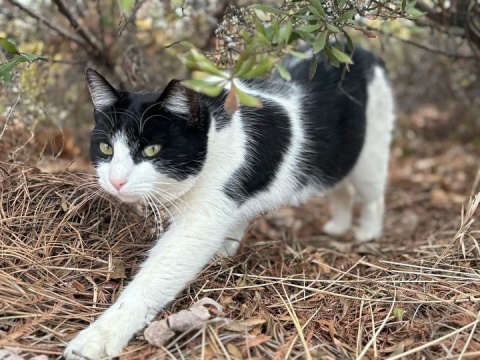
Many cats have become more comfortable with human companionship over the years. Cats like Momo, a central campus cat previously much more skittish, are now popular with students for being extremely friendly and affectionate. Daisy, a cat usually seen in the storm drain across from the Carnegie Building, now allows people to occasionally pet her instead of running away.
The increased socialization is good for potential adoption. However, removing a cat from their outdoor environment and acclimating them to life inside can be a challenge requiring time, resources, and patience. Additionally, not all cats can adjust.
It’s an endeavor worth pursuing for well-suited cats, though, since cats living outdoors encounter both environmental dangers and increased risk for diseases such as Feline Immunodeficiency Virus (FIV) and Feline Leukemia Virus (FeLV). According to Henry, Gracie was positive for FIV, which can spread during fights between cats, so it’s likely affecting other cats in the community.
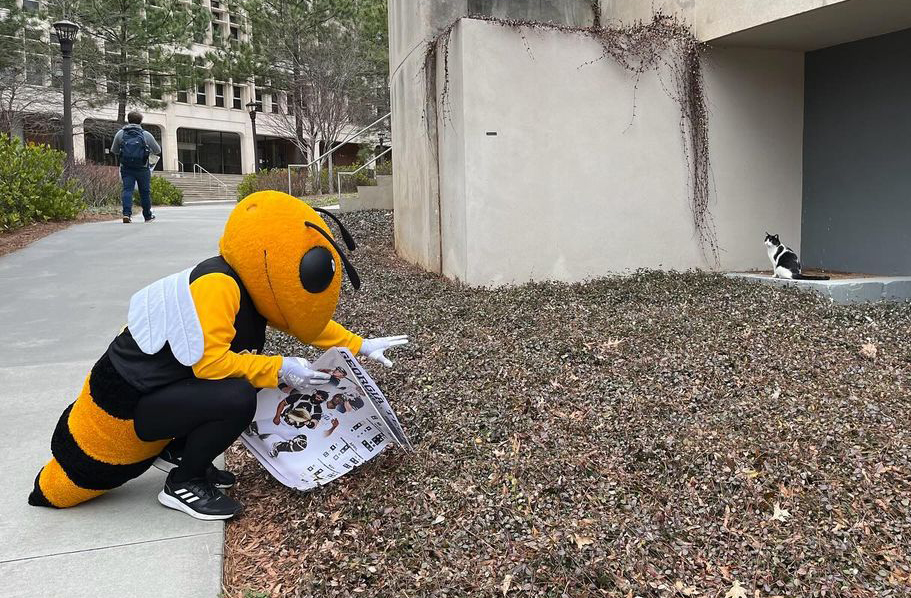
Tips for Interacting With Cats Safely and Appropriately
Henry and other members of Campus Cats advise Tech students, faculty, and staff to understand cat signals and give the cats space when they need it. Also, do not pick up or scruff the cats.
“It’s stressful for them, especially the cats who are less socialized, to be cornered,” said Henry. “Don’t be that person who pursues a cat until they’re trapped. We love to take photos of them and interact with them, but if they’re clearly distressed, let them run away.”
Additionally, the club keeps the cats fed at multiple feeding stations across campus from a well-supplied stockpile of cat food they gathered last fall, so Henry discourages gorging the cats on treats and human food.
“It’s human nature to see a cute cat and want to give them treats, but there’s a lot of human food that can be deadly to cats,” she said. “And some of the cats might have medical issues, so we have to be extra careful with what we feed them. A couple of treats is OK, but don’t give them entire handfuls.”
To learn more about Campus Cats, visit their Instagram page.